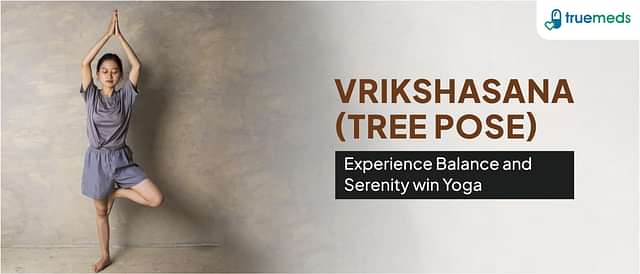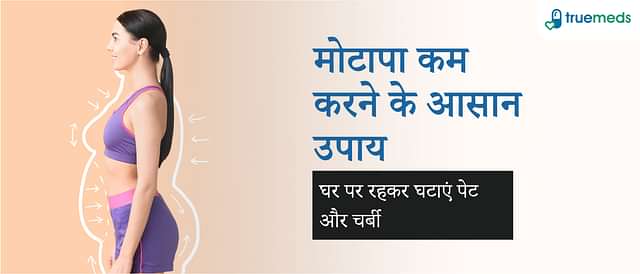Dhanurasana (Bow Pose): Steps, Benefits, Precautions, Tips & More
Last updated on : 18 Mar, 2025
Read time : 9 min
The benefits of Dhanurasana or the bow pose in yoga are many. This piece will shed light on how to perform this posture and go into the details of its types and various steps to perform it correctly. We will also discuss important precautions to be kept in mind and some tips to make your journey into Dhanurasana smoother. So, let’s embark on this enlightening journey of exploring Dhanurasana!
What is Dhanurasana?
Dhanurasana is a yoga pose that requires a blend of strength, flexibility, and focus. It gets its name from two Sanskrit words – ‘Dhanu’, meaning bow, and ‘Asana’, meaning posture or seat. As the name suggests, while performing this pose, your body mimics the shape of a bow. Your torso and legs represent the body of the bow, while your arms serve as the string.
The Dhanurasana procedure may seem challenging initially, but with practice, you’ll be able to master it over time. Remember, patience and consistency are key. There are several benefits of Dhanurasana, but its significance doesn’t end there.
Historical and Cultural Significance
The roots of Dhanurasana can be traced back to ancient Indian texts like the Gheranda Samhita and Hatha Yoga Pradipika, which portray various interpretations of the pose. The pose is often linked with mythological stories such as Lord Rama lifting Shiva’s bow in Sita’s swayamvara, symbolising strength and determination.
In contemporary yoga practice, Dhanurasana is not just appreciated for its physical benefits but also for fostering a deeper connection between mind and body. It promotes emotional resilience and well-being, making it a holistic exercise beyond just a physical one. But like all exercises, it’s crucial to keep necessary precautions in mind while performing Dhanurasana.
As you explore Dhanurasana, it’s also important to recognize that this pose can be adapted to suit different levels of flexibility and strength. Understanding the different types of Dhanurasana can help you find the version that best aligns with your body’s needs and goals.
What are the Different Types of Dhanurasana?
There are different types of Dhanurasana. Normally, it involves lying on the stomach and lifting the legs and chest off the ground, creating a bow-like shape with the body. However, once you have mastered this basic version, you can explore its various modifications to enhance your practice.
Knowing more about the types of Dhanurasana and their challenges can help you decide on the one most suitable for you. For instance, some versions may be for advanced practitioners whereas others may be appropriate for individuals of all levels. Some variations are given below.
Parsva Dhanurasana (Side Bow Pose)
The Parsva Dhanurasana is performed while lying on one’s side. It is beneficial in opening up the chest and shoulders while simultaneously strengthening the back muscles. One of the major Dhanurasana benefits is its ability to enhance your body’s flexibility and core strength.
Urdhva Dhanurasana (Upward Facing Bow Pose or Wheel Pose)
Urdhva Dhanurasana requires you to lift your entire body off the ground, forming an upward arc. This advanced backbend necessitates significant back, shoulder, and leg flexibility and strength. As such, it is often considered a testament of progress for many yoga practitioners.
Akarna Dhanurasana (Ear-Holding Bow Pose)
In the Akarna Dhanurasana variation, you hold your ankles with your hands while performing the backbend. This pose introduces a twist to the traditional bow pose, stretching the neck and shoulders effectively.
Ensure that you learn the correct way to do Dhanurasana from a trained teacher to avoid injuries.
What are the Steps to Perform Dhanurasana?
Performing the Dhanurasana involves a series of steps that should be followed carefully to achieve proper form and gain maximum benefits.
- Lie on your stomach – Position yourself flat on your belly with your feet apart at a hip-width distance and arms resting by your sides.
- Bend your knees – Gently bend both knees and reach back with your hands to hold onto your ankles.
- Inhale deeply – As you breathe in, lift your chest off the ground and simultaneously pull your legs upwards and back. This will form a bow shape with your body. Your chest should be pushing forward while your thighs lift off the floor.
- Keep your gaze forward – Ensure that you maintain your gaze forward and keep your breathing steady throughout the pose.
- Hold the position – Retain the pose for about 15-20 seconds, then exhale and gently lower your chest and legs back to the ground, releasing your ankles.
Practising yoga under the guidance of a qualified instructor is crucial, especially when attempting poses such as Dhanurasana. It’s a powerful backbend that requires meticulous technique and preparation to avoid any strain or injury.
Things Required for Practising Dhanurasana
- Yoga Mat: Having a good quality, non-slip yoga mat is crucial. It provides the grip necessary to hold the pose without slipping.
- Props:
- Yoga Blocks: These can be exceptionally useful for beginners. They assist in reaching the ankles and maintaining balance during the initial stages.
- Yoga Strap: This is a handy tool for those who may struggle to grasp their ankles directly.
- Spacious Environment: Ensure that you have a clean, clutter-free area to practice. This will ensure your safety and allow you to focus better.
- Comfortable Clothing: Opt for flexible and breathable clothing that allows ease of movement and doesn’t restrict your postures.
- Warm-up: Before jumping into Dhanurasana, it’s important to engage in gentle warm-up exercises. Poses such as the Cat-Cow Pose or Cobra Pose prepare your body for the backbend in Dhanurasana.
- Cool Down: After practising Dhanurasana, don’t forget to cool down. This helps relax your body and mind, preventing any strain or injury.
Now that we’ve discussed the essentials required for practising Dhanurasana, let’s explore its benefits.
Benefits of Practising Dhanurasana
Practising Dhanurasana regularly can have several impressive benefits on your physical and mental health.
- Strengthens Muscles: Dhanurasana is excellent for strengthening your back, abdominal, and shoulder muscles. This promotes overall stability and endurance.
- Improves Flexibility: The pose enhances flexibility in your spine, neck, and shoulders. It’s a great way to alleviate tension and stiffness in these areas.
- Stimulates Organs: This pose stimulates your digestive organs, liver, and pancreas. This can significantly aid digestion and metabolic processes, including blood sugar regulation.
- Enhances Respiratory Function: Dhanurasana opens up the chest, improves lung capacity, and enhances respiratory function. This leads to better oxygen flow throughout the body.
- Improves Emotional Well-being: Practising this pose helps to relieve stress and anxiety. It activates the heart chakra, fostering a sense of calm and emotional balance.
- Promotes Good Posture: Regular practice can improve your posture by strengthening the muscles that support your spine. This reduces the risk of back pain and other related issues.
Incorporating Dhanurasana into your regular yoga routine can significantly contribute to your physical health, emotional stability, and overall well-being. So why wait? Start practising today!
Read Also: Health Benefits of Ustrasana (Camel Pose)
Tips for Dhanurasana
To gain the maximum benefit from Dhanurasana, follow these tips:
- Warm-Up: Before attempting Dhanurasana, it’s essential to perform a gentle warm-up to prepare your body for the deep backbend.
- Use Props: If you’re a beginner, using props like yoga straps and blocks can make the pose more accessible and less straining on your body. They can assist in reaching your ankles or offering additional support.
- Engage Your Core: During the pose, activating your core muscles can provide stability and support for your lower back, preventing any undue strain.
- Breathe Deeply: Your breath is a key part of the practice. Focusing on deep, steady breaths can help maintain balance and deepen the stretch in Dhanurasana.
- Listen to Your Body: It’s crucial that you pay attention to how your body feels during the pose. If you experience any pain or discomfort, ease out of the pose and adjust your position.
- Modify as Needed: Remember, yoga is not about forcing postures but about finding a variation that suits your level of flexibility and strength. If you find it hard to grasp your ankles, try bending your knees less or using a strap.
Precautions and Contraindications of Dhanurasana
While Dhanurasana comes with numerous benefits, there are certain precautions to keep in mind:
- Pregnancy: Pregnant women should avoid this pose, especially during their later trimesters, due to potential pressure on the abdomen.
- Spinal Injuries: Those with a history of spinal injuries, herniated discs, or chronic back pain should always consult their doctor before attempting Dhanurasana.
- Wrist or Ankle Injuries: If you’ve had wrist or ankle injuries, be cautious since this pose requires gripping the ankles and may put pressure on these joints.
- Neck Issues: For individuals with neck injuries, it’s important to avoid straining the neck. Keep a neutral neck position and avoid looking too far up or down.
- Warm-Up: A gentle warm-up prepares your body for the deep backbend involved in this pose and reduces the risk of injury.
Dhanurasana is a powerful yoga pose offering numerous physical and mental benefits, including improved flexibility and strength, as well as mental clarity and emotional well-being. By following the proper Dhanurasana procedure, you can safely enjoy this therapeutic posture. Through regular practice of Dhanurasana and maintaining respect for the unique capabilities of your own body, impressive improvements in overall health and vitality can be achieved.
Frequently Asked Questions (FAQs)
The optimal time to perform Dhanurasana, or bow pose yoga, is in the early morning, ideally on an empty stomach.
The contraindications for Dhanurasana include pregnancy, hernia, ulcers, and severe back problems. Always consult your doctor before starting new exercises.
No, it’s not advisable. Practise Dhanurasana with an empty stomach for maximum benefits.
Yes. Regular practice of Dhanurasana steps can help reduce belly fat by toning the abdominal muscles.
Among many Dhanurasana benefits, it helps prevent and manage diabetes by regulating the pancreas and promoting insulin production.
Disclaimer
Our healthcare experts have carefully reviewed and compiled the information presented here to ensure accuracy and trustworthiness. It is important to note that this information serves as a general overview of the topic and is for informational purposes only. It is not intended to diagnose, prevent, or cure any health problem. This page does not establish a doctor-patient relationship, nor does it replace the advice or consultation of a registered medical practitioner. We recommend seeking guidance from your registered medical practitioner for any questions or concerns regarding your medical condition.
Popular Articles
Recommended Articles
Recent Articles
Top-Selling Medicines:
...View more
Top-Selling OTC:
...View more
Company
About UsHealth ArticleHealth StoriesDiseases & Health ConditionsAll MedicinesAll BrandsNeed HelpFAQSubscribe
Registered Office Address
Grievance Officer
Download Truemeds

Contact Us
Our customer representative team is available 7 days a week from 9 am - 9 pm.
v3.7.8
Our Payment Partners



























































